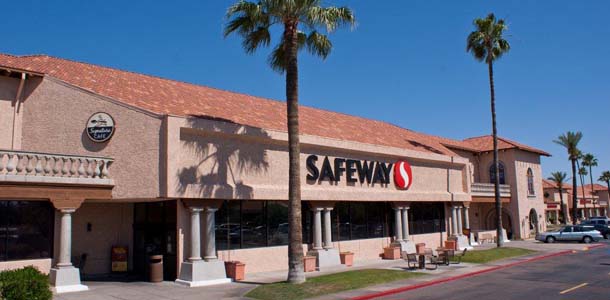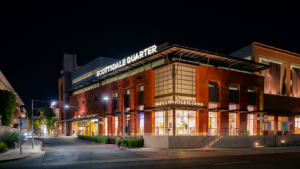Over the past two years, the Phoenix retail real estate market continues to improve with lowered
vacancy rates and strong absorption. The one area that persists as a cause for concern is the number of vacant big boxes in the market. With the recent announcement of the impending sale of Safeway to one or more of their competitors, this is news that could create further hardship in the Arizona shopping center industry; here is why.

Currently, there are 308 vacant big boxes in the Phoenix metropolitan area. Over 56% of these boxes are in neighborhood shopping centers.
This amounts to a total of 175 vacant boxes in neighborhood centers. Never before in the history of the Phoenix area have we ever come close to having this amount of vacancies in our neighborhood shopping centers.
When a grocery store becomes vacant in a neighborhood center this obviously creates a harmful effect on the small shop tenants in the shopping center who depend on the traffic driven by the grocery store. A grocery anchored center does not have the same pulling power to draw customers that a power center or regional mall does. Neighborhood centers typically only reach shoppers in a one to three mile radius. These smaller trade areas are the hardest to replace from a re-tenanting perspective if there is not another grocery store that can fill the void.

With the continued transformation of the grocery industry shifting to regional trade areas and to larger and larger formats often over 100,000 square feet, retailers such as WinCo, Super Wal-Mart and Fry’s Marketplace are not viable candidates for these neighborhood centers. Additionally, many times a grocery store has a restriction against another grocery store going into the same space, limiting the already small pool of potential replacement tenants even further. These types of vacancies also have a very negative effect on the value of this type of shopping center. Many of them have lost 70% to 80% of their value because of a vacant anchor.
When Basha’s filed for bankruptcy in 2009 they left 25 vacant grocery stores in their wake. Today, five years later 13 stores — over half —are still vacant. If Safeway is sold to someone who is currently in our grocery market, I fear that there will be a rash of store closings which will further exacerbate our big box problem – just as we are starting to gain some ground.
Neighborhood shopping centers have been a mainstay for investors as power centers have lost some of their appeal in recent years. Neighborhood centers were considered a safer investment as they had not been affected by the downsizing and consolidations among the power center users (electronic stores and office supply, are examples). Many REITs are looking for a safer product type for their investors and neighborhood centers fit their criteria nicely. A merger of this type will cause the investors to step back and evaluate their options even further.
In the event of a Safeway-Albertson’s merger this could be one of the better outcomes for Arizona, as Albertson’s would have an opportunity to increase their footprint and market share in Phoenix. In this event, don’t be surprised if there is a large block of stores that hit the marketplace, which will impact our improving yet still fragile retail market.
The grocery business in Arizona is very diverse and like all retail, will continue to evolve. There is no doubt that we will have some interesting times on the horizon. Let’s hope that this merger creates a cloud that has a silver lining, and that however this merger shakes out that the stores are able to continue to operate and not add to our big box surplus.




